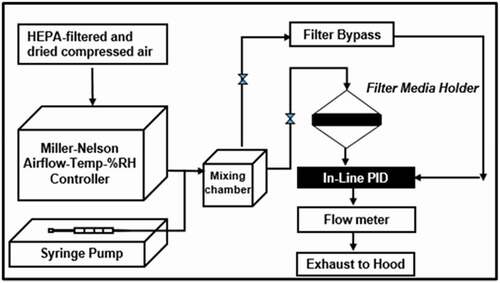Figures & data
Table 1. ACF media characteristics
Table 2. Challenge contaminant properties
Figure 2. Plots of 10% toluene breakthrough time in minutes for each ACF media type at successive bed depths. The challenge contaminant was 200 ppm toluene.
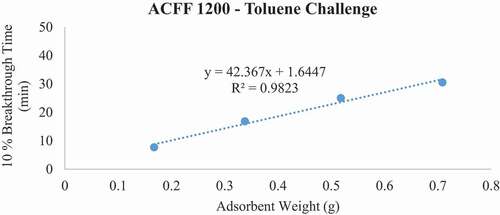
Figure 3. Plots of 10% toluene breakthrough time in minutes for each ACF media type at successive bed depths. The challenge contaminant was 200 ppm toluene.
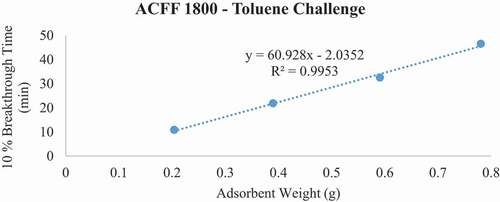
Figure 4. Plots of 10% toluene breakthrough time in minutes for each ACF media type at successive bed depths. The challenge contaminant was 200 ppm toluene.

Figure 5. Plots of 10% MEK breakthrough time in minutes for each ACF media type at successive bed depths. The challenge contaminant was 200 ppm methyl ethyl ketone (MEK).
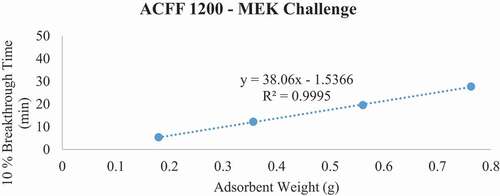
Figure 6. Plots of 10% MEK breakthrough time in minutes for each ACF media type at successive bed depths. The challenge contaminant was 200 ppm methyl ethyl ketone (MEK).
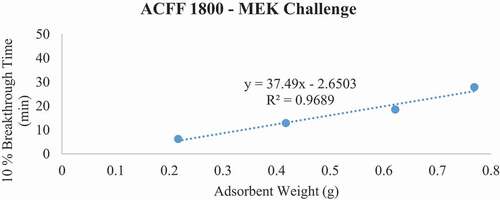
Figure 7. Plots of 10% MEK breakthrough time in minutes for each ACF media type at successive bed depths. The challenge contaminant was 200 ppm methyl ethyl ketone (MEK).
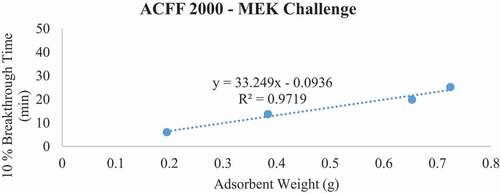
Figure 8. Plots of 10% hexane breakthrough time in minutes for each ACF media type at successive bed depths. The challenge contaminant was 200 ppm hexane.

Figure 9. Plots of 10% hexane breakthrough time in minutes for each ACF media type at successive bed depths. The challenge contaminant was 200 ppm hexane.
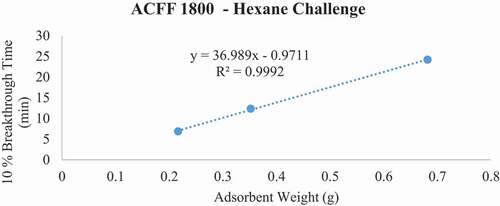
Figure 10. Plots of 10% hexane breakthrough time in minutes for each ACF media type at successive bed depths. The challenge contaminant was 200 ppm hexane.
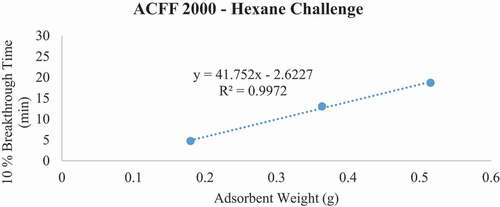
Table 3. Results of ACF surface area analysis
Table 4. Breakthrough experiments with 200 ppm Toluene as challenge contaminant
Table 5. Breakthrough experiments with 200 ppm MEK as challenge contaminant
Table 6. Breakthrough experiments with 200 ppm Hexane as challenge contaminant
Table 7. Maximum ACF bed depths and associated bed weights not in exceedance of 40 mm H20 when tested at a 10 cm/s velocity airflow. Also included are extrapolated 10% breakthrough times (Tb 10%) for each maximum bed weight

